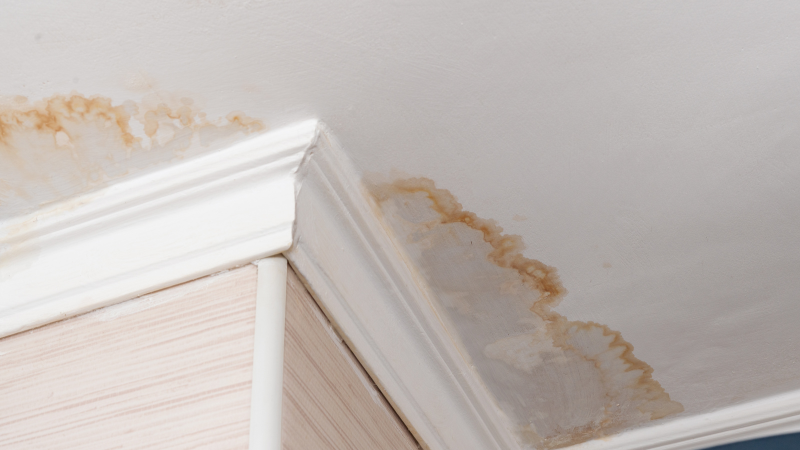What are your ideas regarding How to Fix a Water Damage Bathroom?

The shower room is extremely vulnerable for moist buildup and also prospective water damages because of the constant use of water in it. This post supplies simple assessment strategies to help discovering water damages hazards.
The frequent use water in the restroom makes it very susceptible for damp buildup and also potential water damage. By checking it on a regular basis, you can lower water relevant problems.
The following set of evaluations is easy to execute and also should be done once in every three months in order to keep your bathroom in good shape and to prevent potential water damages caused by the tub, the shower, pipe joints and also plumbing, sinks, closets, and the toilet
Do not overlook carrying out these evaluations as well as be extensive while doing them. Keep in mind that these easy evaluations can conserve you a lot of money by offering very early signs for water damage
Sinks as well as Cabinets
Sinks as well as closets are exposed to wetness as well as moisture daily and also are often ignored. Check consistently under the sink and on the counter top over it. Repair any type of drip in the catch as it may suggest drainpipe troubles. Check out the sink, slow draining pipes may show a blocked drainpipe. Change sink seals if they are broken or loosened.
Bath tub as well as Shower
The shower and also bathtub need unique attention as well as upkeep. Examine the tiles as well as change if cracked. Ensure that there is no missing out on grout between the ceramic tiles. Evaluate and change broken caulking at joints where the wall surfaces fulfill the floor or the tub. Clogged drains and also pipes issues will certainly avoid the bath tub from drying as well as might indicate serious issues under the bathtub. Talk to a specialist instantly to avoid architectural damage. Take note of stainings or soft locations around the bath tub walls as they might show an interior leakage.
Plumbing
Signs for water damage are difficult to identify because the majority of pipelines are set up inside the wall surfaces.
Pay special attention to flooring and also wall surfaces wetness and also spots as they might indicate an unseen plumbing problem. Examine moisture degrees in adjacent spaces too.
The Toilet
The bathroom is a vulnerable water junction. Examine the water lines and look for leakages around the toilet seat, in the pipe, and under the water storage tank. If you identify any type of signs of dampness on the flooring around the toilet, look for leaks in the toilet edge and storage tank seals.
Be aware that hanging bathroom dish deodorants raises the possibilities for blockages.
Water Damage Signs In The Bathroom To Avoid Cleanup
Musty smell
This is one of the easiest signs to catch because musty smells are so odorous. The damp, earthy, moldy smell should be a big red flag. The smell will develop when moisture gets trapped in surfaces, and begins to facilitate mold growth. Leaking pipes under cabinets, inside walls, and behind shower fixtures will cause moisture to stay trapped and not dry, which will lead to mold growth and spread. As soon as you notice any musty smells in your bathroom, have it checked for hidden water damage and cleanup signs.
Visible mold
If the smell isn’t there to give it away, sometimes you will actually see mold growth. Finding mold in your bathroom is a serious problem, because mold is very harmful to your health. By the time mold growth is visible, it also means that water damage has already occurred and been present for some time. The only way the mold problem can be resolved is to find the source of the moisture and get it stopped. To safely and adequately remove mold, you need to have professionals handle the remediation. Do not waste any time in getting mold problems addressed, fixed, and sanitized so that you can protect you and your family from the many respiratory symptoms caused by mold exposure.
Damaged floors
Bathroom floors should be able to withstand some exposure to water while still remaining in good condition. However, when excess exposure or water leaks occur, they will begin to damage even the most water-resistant flooring. If you notice any cracking, bubbling, staining, or warping on your bathroom floors, there is probably a water leak somewhere causing the distortion. If you notice areas of the floor have become softer, or even have a spongy feeling, there is probably damage to the subfloor. Subflooring is typically made up of plywood. When plywood is exposed to water or moisture, it will absorb it. Once it has become saturated, the weight of the excess water will cause the wood to swell and soften. Check the floors in your bathroom frequently to catch any of these sings before they lead to damaged subflooring.
Changes on walls
When water leaks behind walls, it will cause changes in the drywall. Peeling plaster, blistering paint, and soggy wallpaper are all good indicators that excess water is building up behind the wall. Water leaking behind drywall will cause it to swell and be soft to the tough. If you start to notice gaps along the trim of your walls, or where tile meets the wall, it could also be a strong indicator that there is a leak behind the wall. Any changes, distortion, or damage on the walls should be evaluated as soon as you notice it to prevent further water damage and cleanup.

I'm just very drawn to How to Repair and Prevent Bathroom Water Damage and I really hope you enjoyed reading the new blog posting. Sharing is nice. Helping others is fun. Many thanks for taking the time to read it.
Visit My Web Page